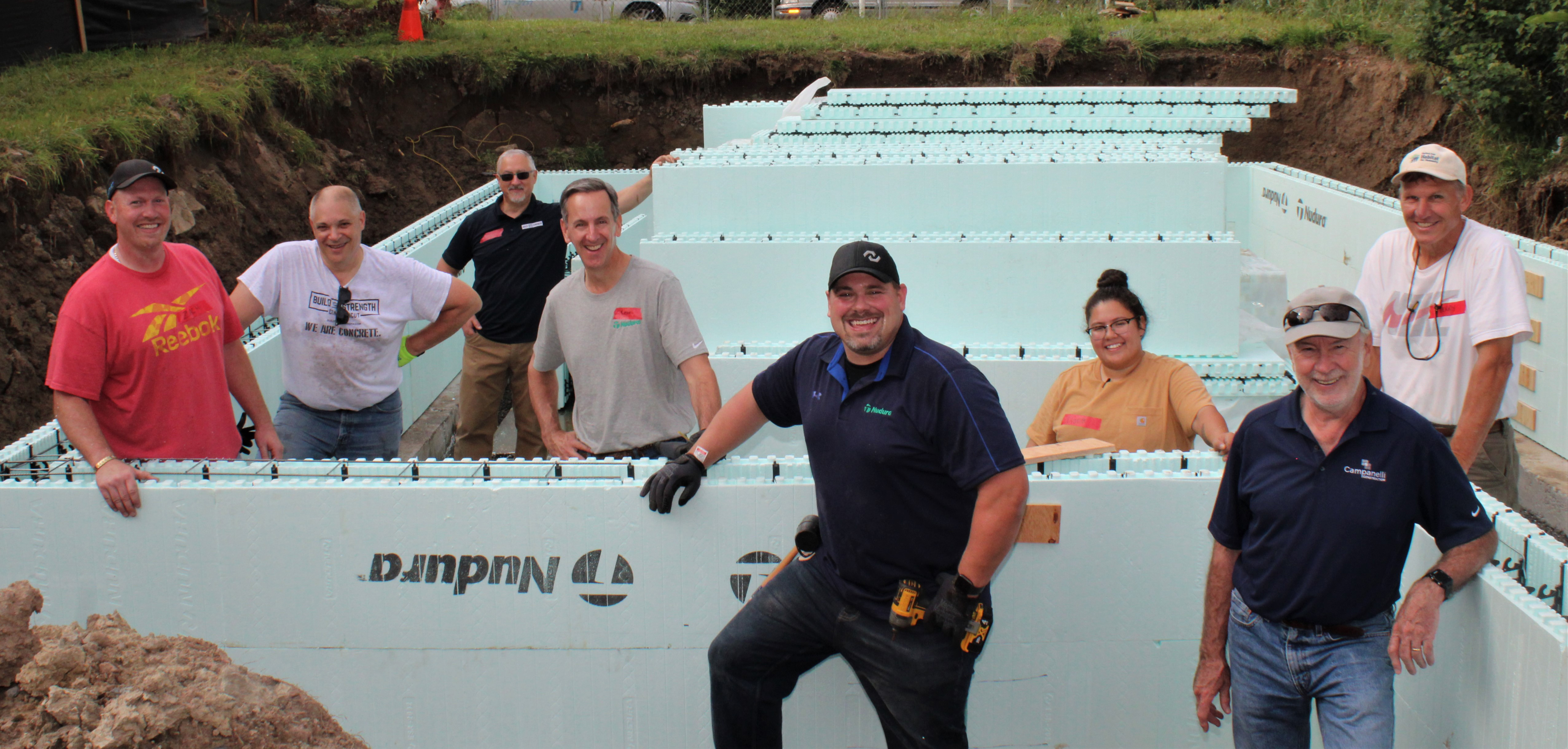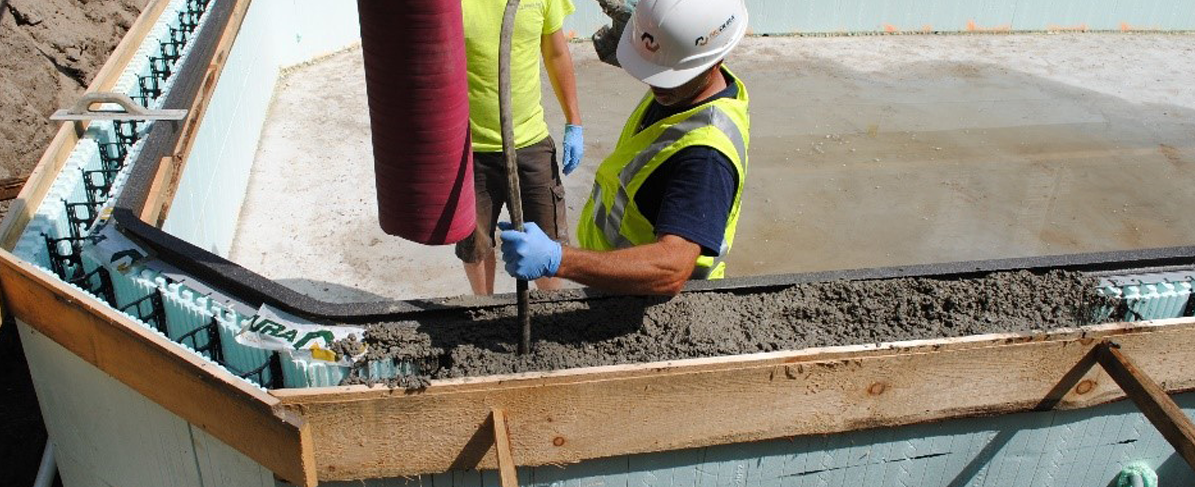
- Products
- Why Nudura
- Nudura Project Applications
- Training Academy
- Resources
- Company
To remain competitive, contractors, builders, and installers need to keep up with the latest design trends, including sustainability and energy efficiency. One building material gaining popularity is insulated concrete forms, or ICFs. An affordable and energy-efficient alternative to traditional wood framing, ICFs can save time and money throughout the construction process.
To help professionals in residential and commercial construction offer this innovative solution to their clients, Nudura has an online course and in-person ICF training to teach you everything you need to know to build with ICFs.
Here are the six key lessons you can expect to learn in Nudura’s ICF training courses:
Lesson 1: Intro to ICFs
- What are ICFs?
- How do ICFs contribute to a stronger, more insulated structure?
- What types of buildings can I use ICFs for?
Our first module introduces you to Nudura forms and how they provide fire and sound resistance, improve indoor air quality, speed construction, and enable flexible designs. You’ll also learn the safety essentials and what equipment you’ll need for installation.
Lesson 2: Planning Your Project
Our second module walks through the first steps of building with ICFs, showing you what to include in your drawings, contracts, and other planning documents. It also explains the requirements for reinforcing above-grade and below-grade walls.
Lesson 3: Installing ICFs
In this module, we outline the tools you need — including rebar bender, a hot knife, and concrete vibrator — and teach you how to prepare the worksite for smooth delivery and installation. You’ll learn how to set up the footings and place the first and second course of ICFs, laying a solid groundwork for the rest of the installation process.
Lesson 4: Special Applications
Now that you know the first steps for installing ICFs and laying out the founding forms, our fourth module covers special applications. These include preparing and reinforcing the openings for windows and doors, and planning and installing openings for service penetrations. We'll also go over the alignment system you’ll need to use to support the ICF wall during concrete placement, while providing a safe working platform for the installer. Finally, you’ll learn about other special applications for ICFs like floor and roof connections, beam pockets, brick ledges, and pilasters.
Lesson 5: Concrete Guidelines
The fifth module covers everything you need to know about the concrete in ICFs — from what you need to know before ordering (e.g. strength, slump, and spacing between trucks) to different placement methods you can use (e.g. concrete boom pump, crane and bucket, or conveyor belt). We’ll go over step-by-step instructions and outline our recommendations for best results.

Lesson 6: Finishing Touches
Builders and homeowners often ask “what kinds of finishes can we have with ICFs?” Many worry their favorite styles and designs won’t work with insulated concrete forms, but fortunately, that’s not the case — ICFs are versatile and can be used with almost any exterior finish imaginable.
In the last module of the course, we’ll talk about all the possibilities, including vinyl, aluminum, steel siding, wood, composite, stucco, masonry veneers, brick, stone, and more. We’ll also go over interior finishes and trim options, as well as waterproofing and thermal barrier protection. Finally, we’ll teach you the required steps and best practices for installing electrical, mechanical, and plumbing within ICF wall systems.
Learning More About Insulated Concrete Forms
Now that you have a better understanding of what you’ll learn expect from our training course, you can take the next step and sign up for an in-person course near you or explore the self-guided online modules.
CONTACT US
We’re committed to supporting homeowners and design professionals who are interested in or use our products. We’re always happy to help and provide more information.




